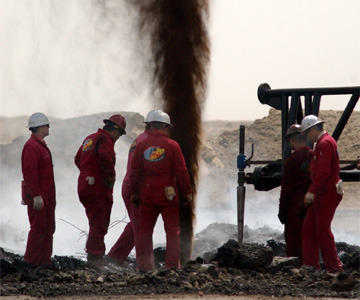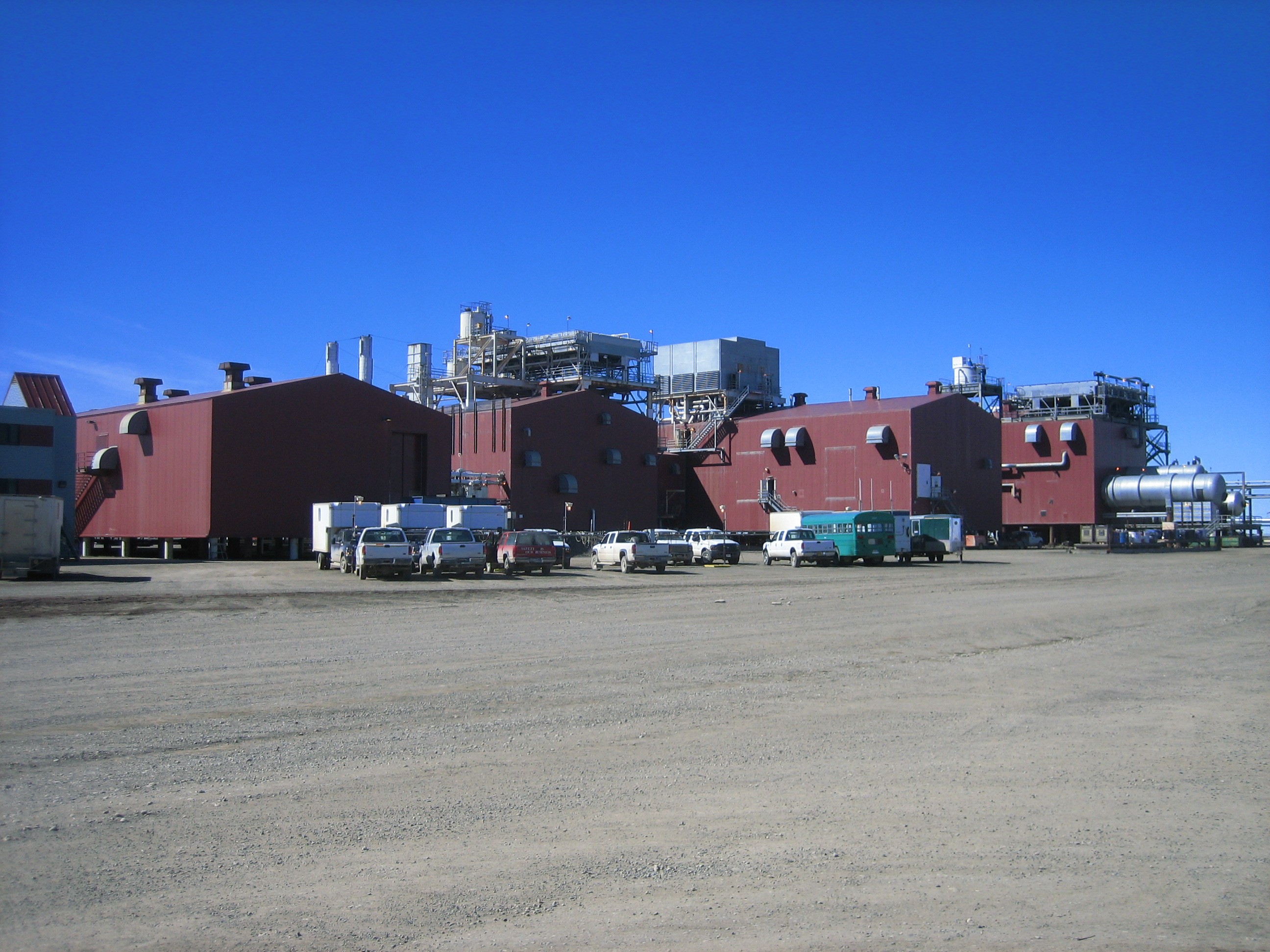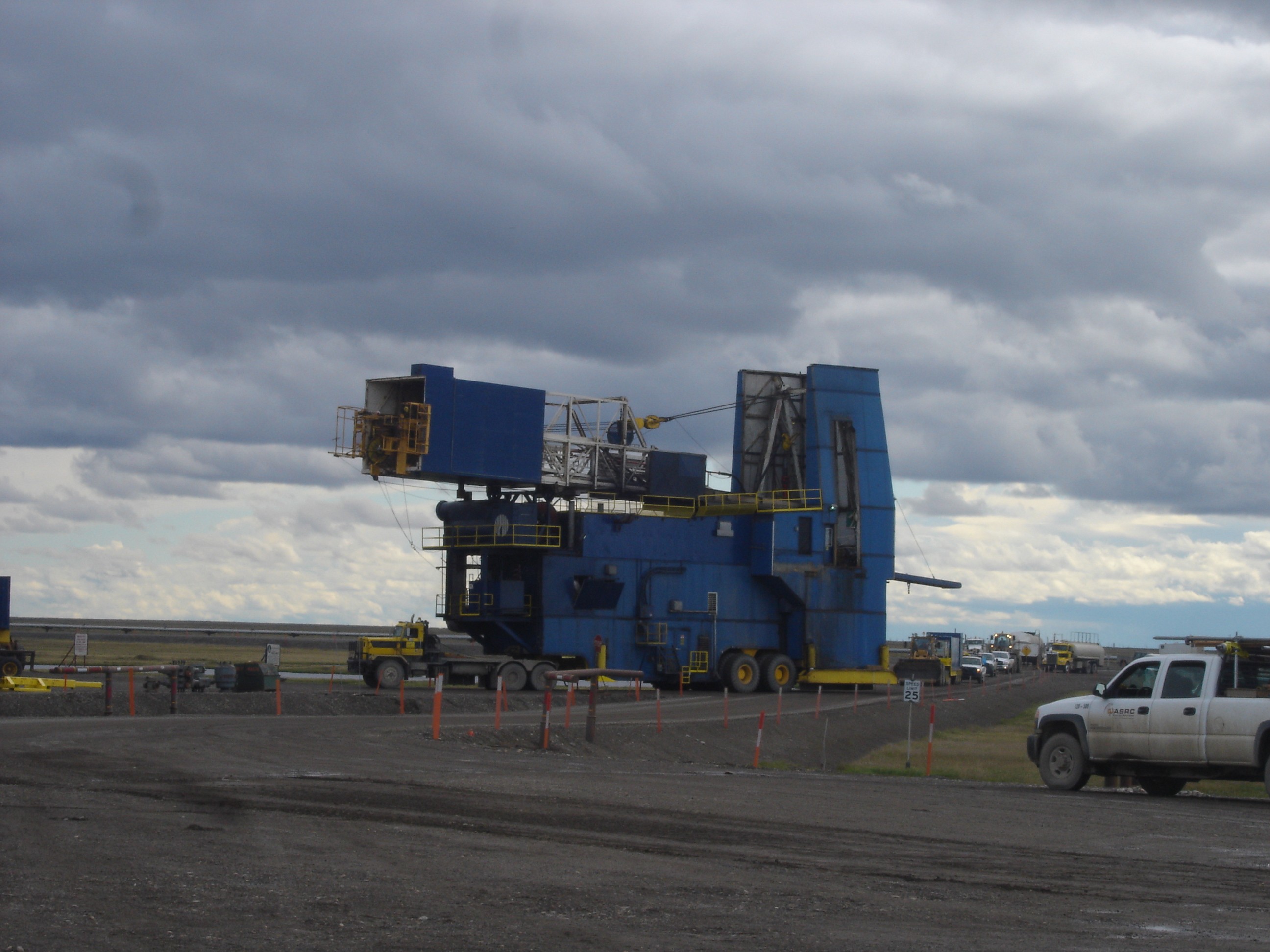
http://www.evworld.com/images/oilfield_blowout.jpg
Once oil is discovered, a well is placed at the site called a drill pad, and a vertical well is drilled. The type of drilling method used depends heavily on the composition of the rock beneath. Four main methods for oil well drilling are Mud-rotary, Air-percussion, Air-rotary, and Diamond core drilling. Mud Rotary is used for drilling through soft rocks and clay. It employs a slurry mix forced down to the drill head to loosen up material and help force it to the surface. Air-precussion drilling is used to break through hard rock with a vibrating head and compressed air pumping the fragmented material to the surface. Air-rotaty drilling is a common application for soft rock where compressed air is forced past a rotating head. Diamond core drilling is used to gain information about the rock formation composition. A core of material is cut out of the rock and left in the center of the pipe. All of these techniques have been available for many years, but newer technologies are proving to be more productive and economical.

Milne Pt. pump station and living quarters for the hundreds who work there.
The majority of drilling is done with vertical wells that extend straight down into the rock formations. Newer wells, such as horizontal wells, incoorperate many wellbores into one well pad. The offshoots branch outward horizontally from the central location, providing greater scope of the reserves with far less damage to the environment above.

Transporting a drilling rig with convoy of supply trucks.